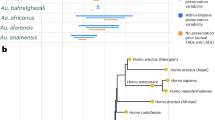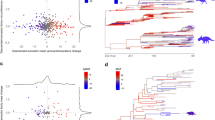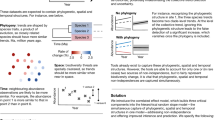Abstract
Global warming is killing corals; however, the effects of warming on population connectivity, a process fundamental to reef recovery, are largely unexplored. Using a high-resolution (as high as 200 m), empirically calibrated biophysical model of coral larval dispersal for the southern Great Barrier Reef, we show that the increased larval mortality and reduced competency duration under a 2 °C warming alter dispersal patterns, whereas projected changes in large-scale currents have limited effects. Overall, there was on average a 7% decrease in the distance larvae disperse (among-reef interquartile range (IQR), −10% to −4%), an 8% decrease in the number of connections into each reef (IQR, −11% to −3%) and a 20% increase in local retention (IQR, 0% to +49%). Collectively, these shifts imply that 2 °C of warming will reduce inter-reef connectivity, hampering recovery after disturbances and reducing the spread of warm-adapted genes. Such changes make protections more effective locally, but may require reducing spacing between protected areas.
This is a preview of subscription content, access via your institution
Access options
Access Nature and 54 other Nature Portfolio journals
Get Nature+, our best-value online-access subscription
$29.99 / 30 days
cancel any time
Subscribe to this journal
Receive 12 print issues and online access
$209.00 per year
only $17.42 per issue
Buy this article
- Purchase on Springer Link
- Instant access to full article PDF
Prices may be subject to local taxes which are calculated during checkout


Similar content being viewed by others
Data availability
Yearly connectivity matrices and the processed data used to construct Figs. 1a–e and 2 are available at https://doi.org/10.5061/dryad.4f4qrfjbk. Larval survival and competency is provided in the Appendix 1 (Supplementary Fig. 1) and can be obtained from the authors on request.
Code availability
The SLIM model source code can be found at https://git.immc.ucl.ac.be/dg/dg. Larval dynamics modelling is provided in the Appendix 1, and references therein, and can be obtained from the authors on request.
References
Cesar, H., Burke, L. & Pet-Soede L. The Economics of Worldwide Coral Reef Degradation (Cesar Environmental Economics Consulting, 2003).
Pandolfi, J. M. et al. Global trajectories of the long-term decline of coral reef ecosystems. Science 301, 955–958 (2003).
Hoegh-Guldberg, O., Poloczanska, E. S., Skirving, W. & Dove, S. Coral reef ecosystems under climate change and ocean acidification. Front. Mar. Sci. 4, 158 (2017).
Hughes, T. P. et al. Global warming transforms coral reef assemblages. Science 359, 80–83 (2018).
Grottoli, A. G., Rodrigues, L. J. & Juarez, C. Lipids and stable carbon isotopes in two species of Hawaiian corals, Porites compressa and Montipora verrucosa, following a bleaching event. Mar. Biol. 145, 621–631 (2004).
Grottoli, A. G. et al. The cumulative impact of annual coral bleaching can turn some coral species winners into losers. Glob. Change Biol. 20, 3823–3833 (2014).
Underwood, J. N., Smith, L. D., van Oppen, M. J. H. & Gilmour, J. P. Ecologically relevant dispersal of corals on isolated reefs: implications for managing resilience. Ecol. Appl. 19, 18–29 (2009).
Nozawa, Y. & Harrison, P. L. Effects of elevated temperature on larval settlement and post-settlement survival in scleractinian corals, Acropora solitaryensis and Favites chinensis. Mar. Biol. 152, 1181–1185 (2007).
Heyward, A. J. & Negri, A. P. Plasticity of larval pre-competency in response to temperature: observations on multiple broadcast spawning coral species. Coral Reefs 29, 631–636 (2010).
Figueiredo, J., Baird, A. H., Harii, S. & Connolly, S. R. Increased local retention of reef coral larvae as a result of ocean warming. Nat. Clim. Change 4, 498–502 (2014).
Munday, P. L. et al. Climate change and coral reef connectivity. Coral Reefs 28, 379–395 (2009).
van Gennip, S. J. et al. Going with the flow: the role of ocean circulation in global marine ecosystems under a changing climate. Glob. Change Biol. 23, 2602–2617 (2017).
IPCC Climate Change 2014: Impacts, Adaptation, and Vulnerability (eds Field, C. B. et al.) (Cambridge Univ. Press, 2014).
Nishikawa, A. & Sakai, K. Settlement-competency period of planulae and genetic differentiation of the scleractinian coral Acropora digitifera. Zool. Sci. 22, 391–399 (2005).
Connolly, S. R. & Baird, A. H. Estimating dispersal potential for marine larvae: dynamic models applied to scleractinian corals. Ecology 91, 3572–3583 (2010).
Figueiredo, J., Baird, A. H. & Connolly, S. R. Synthesizing larval competence dynamics and reef-scale retention reveals a high potential for self-recruitment in corals. Ecology 94, 650–659 (2013).
Randall, C. J. & Szmant, A. M. Elevated temperature affects development, survivorship, and settlement of the elkhorn coral, Acropora palmata (Lamarck 1816). Biol. Bull. 217, 269–282 (2009).
Randall, C. J. & Szmant, A. M. Elevated temperature reduces survivorship and settlement of the larvae of the Caribbean scleractinian coral, Favia fragum (Esper). Coral Reefs 28, 537–545 (2009).
Burgess, S. C. et al. Beyond connectivity: how empirical methods can quantify population persistence to improve marine protected-area design. Ecol. Appl. 24, 257–270 (2014).
Woolsey, E. S., Keith, S. A., Byrne, M., Schmidt-Roach, S. & Baird, A. H. Latitudinal variation in thermal tolerance thresholds of early life stages of corals. Coral Reefs 34, 471–478 (2015).
Rodriguez-Lanetty, M., Harii, S. & Hoegh-Guldberg, O. Early molecular responses of coral larvae to hyperthermal stress. Mol. Ecol. 18, 5101–5114 (2009).
Andutta, F. P., Kingsford, M. J. & Wolanski, E. ‘Sticky water’ enables the retention of larvae in a reef mosaic. Estuar. Coast. Shelf Sci. 54, 655–668 (2012).
Hock, K. et al. Connectivity and systemic resilience of the Great Barrier Reef. PLoS Biol. 15, e2003355 (2017).
Bode, M., Bode, L., Choukroun, S., James, M. K. & Mason, L. B. Resilient reefs may exist, but can larval dispersal models find them? PLoS Biol. 16, e2005964 (2018).
Baird, A. H. & Marshall, P. A. Mortality, growth and reproduction in scleractinian corals following bleaching on the Great Barrier Reef. Mar. Ecol. Prog. Ser. 237, 133–141 (2002).
Hughes, T. P. et al. Global warming transforms coral reef assemblages. Nature 556, 492–496 (2018).
Strathmann, R. R. et al. Evolution of local recruitment and its consequences for marine populations. Bull. Mar. Sci. 70, 377–396 (2002).
Marshall, D. J., Monro, K., Bode, M., Keough, M. J. & Swearer, S. Phenotype–environment mismatches reduce connectivity in the sea. Ecol. Lett. 13, 128–140 (2010).
Szmant, A. M. & Gassman, N. J. The effects of prolonged “bleaching” on the tissue biomass and reproduction of the reef coral Montastrea annularis. Coral Reefs 8, 217–224 (1990).
Leis, J. M. Nearshore distributional gradients of larval fish (15 taxa) and planktonic crustaceans (6 taxa) in Hawaii. Mar. Biol. 72, 89–97 (1982).
Kraines, S. B., Yanagi, T., Isobe, M. & Komiyama, H. Wind-wave driven circulation on the coral reef at Bora Bay, Miyako Island. Coral Reefs 17, 133–143 (1998).
Paris, C. B. & Cowen, R. K. Direct evidence of a biophysical retention mechanism for coral reef fish larvae. Limnol. Oceanogr. 49, 1964–1979 (2004).
Keshavmurthy, S., Fontana, S., Mezaki, T., Gonzalez, L. C. & Chen, C. A. Doors are closing on early development in corals facing climate change. Sci. Rep. 4, 5633 (2014).
Thomas, C. J. et al. Numerical modelling and graph theory tools to study ecological connectivity in the Great Barrier Reef. Ecol. Model. 272, 160–174 (2014).
Holstein, D. M., Paris, C. B., Vaz, A. C. & Smith, T. B. Modeling vertical coral connectivity and mesophotic refugia. Coral Reefs 35, 23–37 (2016).
Hata, T. et al. Coral larvae are poor swimmers and require fine-scale reef structure to settle. Sci. Rep. 7, 2249 (2017).
Gleason, D. F. & Hofmann, D. K. Coral larvae: from gametes to recruits. J. Exp. Mar. Biol. Ecol. 408, 42–57 (2011).
Acknowledgements
Major funding for this research was provided by the Australian Research Council (DP110101168) (J.F., A.H.B.), a Queensland Government Smart Futures Fellowship (J.F.), the Australian Research Council’s Centre of Excellence for Coral Reef Studies (A.H.B., S.R.C.), Federation Wallonie-Bruxelles ARC grant 10/15-028 (C.J.T.), the Belgian Fund for Scientific Research (FRS-FNRS) (J.L.), and Université catholique de Louvain, Belgium (E.H., E.D., J.L.). High-performance computing resources were provided by the Université catholique de Louvain (CISM/UCL) and the Consortium des Équipements de Calcul Intensif en Fédération Wallonie-Bruxelles (CÉCI) funded by the FRS-FNRS under grant number 2.5020.11 and by the Walloon Region.
Author information
Authors and Affiliations
Contributions
J.F., C.J.T., S.R.C. and A.H.B. conceptualized the study. J.F. collected the data. J.F. and C.J.T. wrote the original manuscript. S.R.C., A.H.B., E.H. and E.D. edited the article. C.J.T., E.H., E.D. and J.L. developed the model. All authors participated in funding acquisition.
Corresponding author
Ethics declarations
Competing interests
The authors declare no competing interests.
Peer review information
Nature Climate Change thanks the anonymous reviewers for their contribution to the peer review of this work.
Additional information
Publisher’s note Springer Nature remains neutral with regard to jurisdictional claims in published maps and institutional affiliations.
Supplementary information
Supplementary Information
Supplementary methods and figures.
Rights and permissions
About this article
Cite this article
Figueiredo, J., Thomas, C.J., Deleersnijder, E. et al. Global warming decreases connectivity among coral populations. Nat. Clim. Chang. 12, 83–87 (2022). https://doi.org/10.1038/s41558-021-01248-7
Received:
Accepted:
Published:
Issue Date:
DOI: https://doi.org/10.1038/s41558-021-01248-7
This article is cited by
-
Larval precompetency and settlement behaviour in 25 Indo-Pacific coral species
Communications Biology (2024)
-
Assessing coral reef conservation planning in Wakatobi National Park (Indonesia) from larval connectivity networks
Coral Reefs (2024)
-
Biophysical models resolution affects coral connectivity estimates
Scientific Reports (2023)
-
Phytoplankton diversity explained by connectivity across a mesoscale frontal system in the open ocean
Scientific Reports (2023)
-
Comparative study for effect of Ti, Nb and W incorporation on the electronic and optical properties of pristine hafnia (m-HfO2): DFT theoretical prospective
Journal of Computational Electronics (2023)



